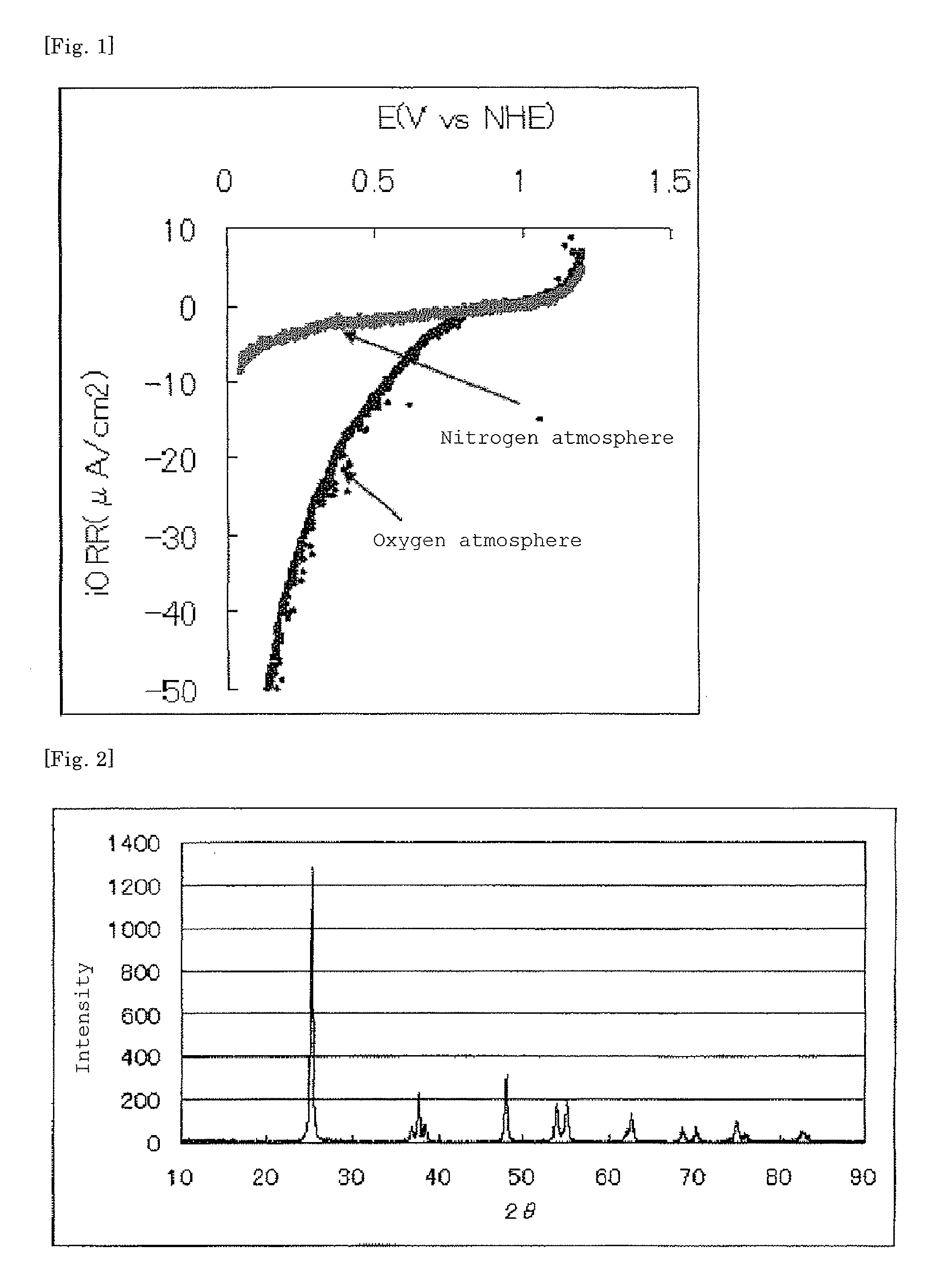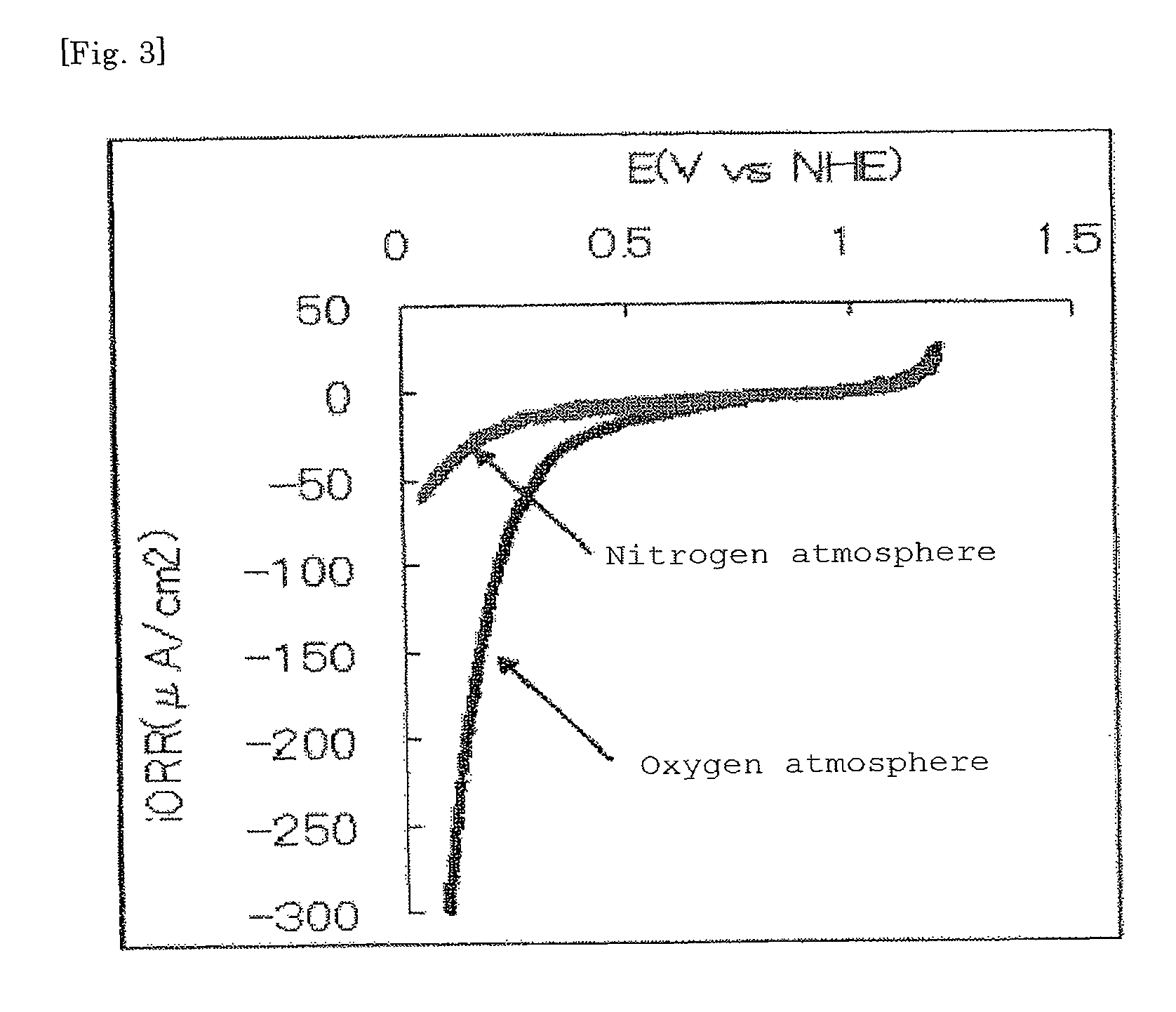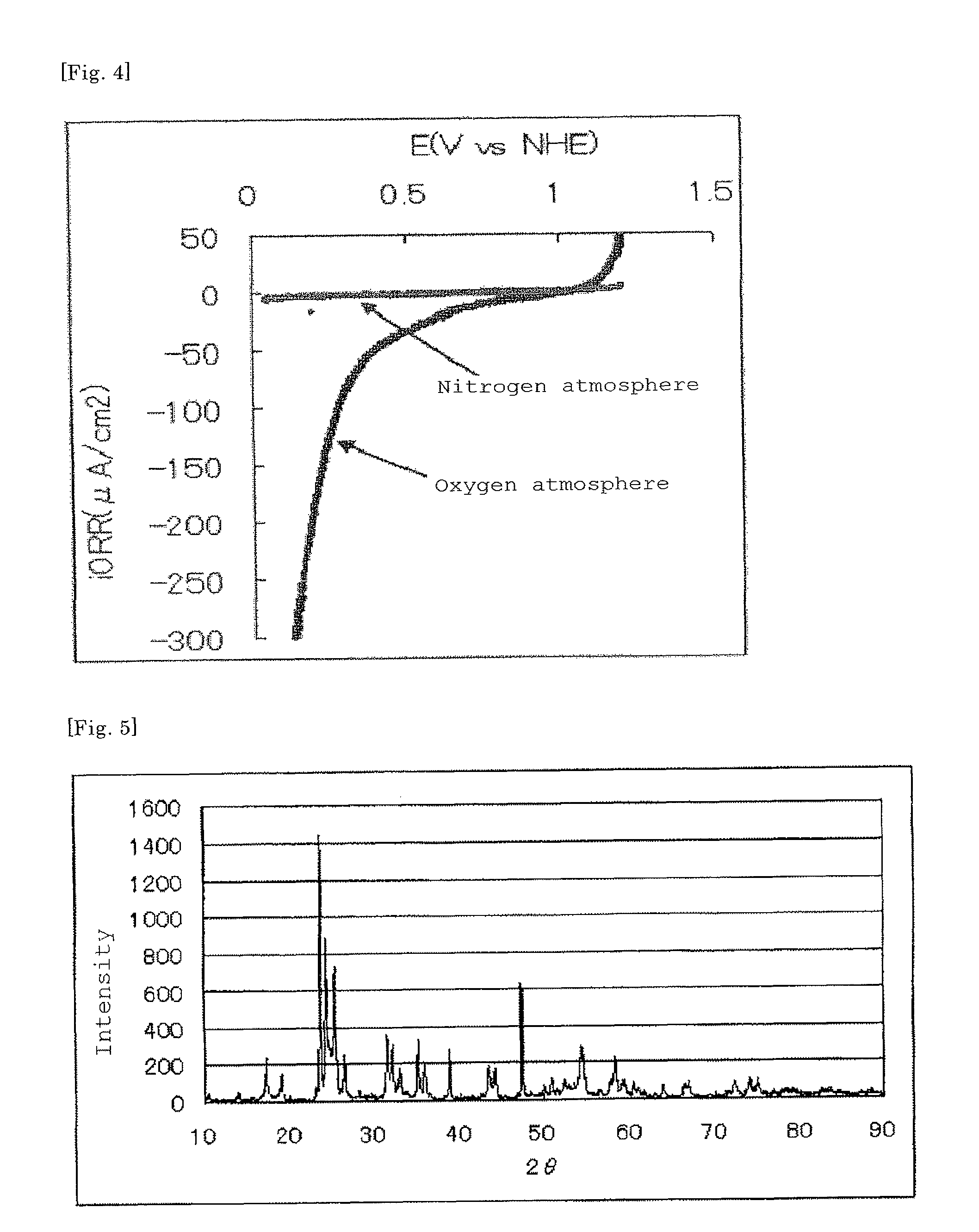Catalyst layer, membrane electrode assembly and fuel cell
a technology of membrane electrodes and catalyst layers, applied in the direction of physical/chemical process catalysts, cell components, vanadium compounds, etc., can solve the problems of limited amount and high price of platinum, and achieve the effects of stable and resistant to corrosion, high oxygen reduction activity, and high oxygen reduction activity
- Summary
- Abstract
- Description
- Claims
- Application Information
AI Technical Summary
Benefits of technology
Problems solved by technology
Method used
Image
Examples
example 1
Production of Electrocatalyst
[0121]Titanium (IV) tetrabutoxide monomer (manufactured by Wako Pure Chemical Industries Ltd.) in an amount of 5.0 g was dissolved in 100 mL of ethanol (manufactured by Wako Pure Chemical Industries Ltd.). With stirring, 1.3 mL of deionized water was added dropwise. The stirring was continued for another one hour, and the liquid mixture was filtered under reduced pressure to give a solid. The solid was washed with 100 mL of deionized water and was filtered under reduced pressure. The washing and the filtration under reduced pressure were carried out five times.
[0122]The solid was placed in an alumina crucible and was dried at 120° C. for 1 hour. The resultant titanium (IV) oxide was heat treated in an electric furnace (desktop muffle furnace KDF P90 manufactured by DENKEN CO., LTD.) under a stream of air at 50 NL / min under the following conditions.
[0123]Temperature increasing rate: 20° C. / min
[0124]Calcination temperature: 600° C.
[0125]Calcination time (r...
example 2
Production of Electrocatalyst
[0144]Niobium (IV) 2-ethylhexanoate (manufactured by Wako Pure Chemical Industries Ltd.) in an amount of 5.0 g was dissolved in 100 mL of ethanol (manufactured by Wako Pure Chemical Industries Ltd.). With sufficient stirring, 11 mL of 25% tetramethylammonium hydroxide diluted five times with water was added with use of a dropping funnel at a rate of 0.2 mL / min. The stirring was continued for another 5 hours, and the liquid mixture was filtered under reduced pressure to give a solid. The solid was washed with 100 mL of deionized water and was filtered under reduced pressure. The washing and the filtration were carried out five times.
[0145]The solid was placed in an alumina crucible and was dried at 120° C. for 1 hour to afford 0.94 g of a hydrolyzate. The hydrolyzate was sufficiently crushed in a mortar to give an electrocatalyst (2).
(Production of Fuel Cell Electrode)
[0146]A fuel cell electrode (2) was produced in the same manner as in Example 1 except t...
example 3
[0155]The electrocatalyst (2) from Example 2 was heat treated in an electric furnace (desktop muffle furnace KDF P90 manufactured by DENKEN CO., LTD.) under a stream of air at 50 NL / min under the following conditions.
[0156]Temperature increasing rate: 20° C. / min
[0157]Calcination temperature: 1000° C.
[0158]Calcination time: 2 hours
[0159]After the heat treatment, the calcined product was naturally cooled. As a result, 1.0 g of niobium (V) pentoxide was obtained. The niobium (V) pentoxide was sufficiently crushed in a mortar to give an electrocatalyst (3).
(Production of Fuel Cell Electrode)
[0160]A fuel cell electrode (3) was produced in the same manner as in Example 1 except that the electrocatalyst (1) was replaced by the electrocatalyst (3).
(Evaluation of Oxygen Reduction Activity)
[0161]The oxygen reduction activity was evaluated in the same manner as in Example 1 except that the fuel cell electrode (1) was replaced by the fuel cell electrode (3).
[0162]The current-potential curve rec...
PUM
| Property | Measurement | Unit |
|---|---|---|
| ionization potential | aaaaa | aaaaa |
| BET specific surface area | aaaaa | aaaaa |
| temperature | aaaaa | aaaaa |
Abstract
Description
Claims
Application Information
 Login to View More
Login to View More - R&D
- Intellectual Property
- Life Sciences
- Materials
- Tech Scout
- Unparalleled Data Quality
- Higher Quality Content
- 60% Fewer Hallucinations
Browse by: Latest US Patents, China's latest patents, Technical Efficacy Thesaurus, Application Domain, Technology Topic, Popular Technical Reports.
© 2025 PatSnap. All rights reserved.Legal|Privacy policy|Modern Slavery Act Transparency Statement|Sitemap|About US| Contact US: help@patsnap.com



